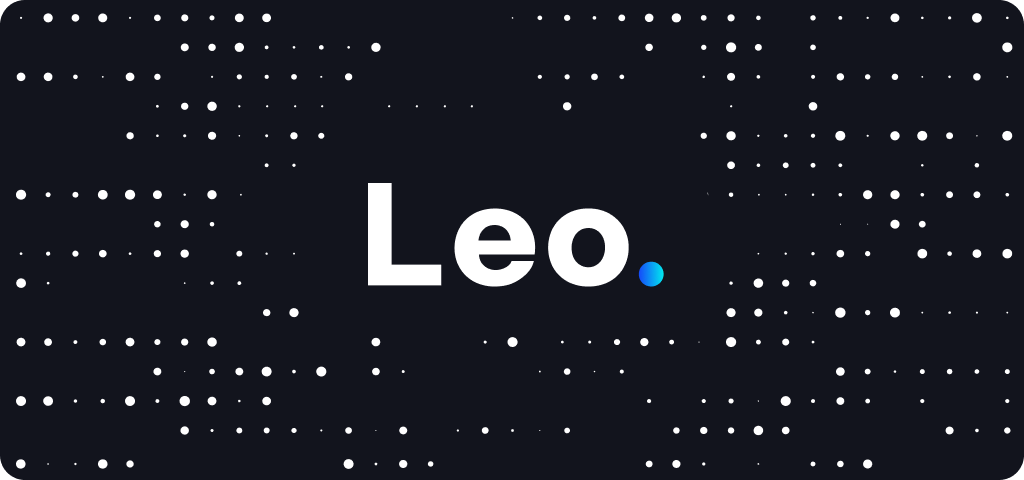|
|
||
|---|---|---|
| .cargo | ||
| .github | ||
| .resources | ||
| .travis | ||
| asg | ||
| ast | ||
| compiler | ||
| examples | ||
| gadgets | ||
| grammar | ||
| imports | ||
| input | ||
| leo | ||
| linter | ||
| package | ||
| state | ||
| .codecov.yml | ||
| .gitignore | ||
| .licenserc.json | ||
| .rustfmt.toml | ||
| .rusty-hook.toml | ||
| .travis.yml | ||
| Cargo.lock | ||
| Cargo.toml | ||
| FAQs.md | ||
| README.md | ||
The Leo Programming Language
Leo is a functional, statically-typed programming language built for writing private applications.
Table of Contents
1. Overview
Welcome to the Leo programming language.
Leo provides a high-level language that abstracts low-level cryptographic concepts and makes it easy to integrate private applications into your stack. Leo compiles to circuits making zero-knowledge proofs practical.
The syntax of Leo is influenced by traditional programming languages like JavaScript, Scala, and Rust, with a strong emphasis on readability and ease-of-use. Leo offers developers with tools to sanity check circuits including unit tests, integration tests, and console functions.
Leo is one part of a greater ecosystem for building private applications on Aleo. If your goal is to build a user experience on the web that is both truly personal and truly private, then we recommend downloading the Aleo Studio IDE and checking out the Aleo Package Manager.
2. Build Guide
2.1 Install Rust
We recommend installing Rust using rustup. You can install rustup as follows:
-
macOS or Linux:
curl --proto '=https' --tlsv1.2 -sSf https://sh.rustup.rs | sh -
Windows (64-bit):
Download the Windows 64-bit executable and follow the on-screen instructions.
-
Windows (32-bit):
Download the Windows 32-bit executable and follow the on-screen instructions.
2.2a Build from Crates.io
We recommend installing Leo this way. In your terminal, run:
cargo install leo-lang
Now to use Leo, in your terminal, run:
leo
2.2b Build from Source Code
Alternatively, you can install Leo by building from the source code as follows:
# Download the source code
git clone https://github.com/AleoHQ/leo
cd leo
# Build in release mode
$ cargo build --release
This will generate an executable under the ./target/release directory. To run Leo, run the following command:
./target/release/leo
3. Quick Start
Use the Leo CLI to create a new project
# create a new `hello_world` Leo project
leo new hello_world
cd hello_world
# build & setup & prove & verify
leo run
The leo new command creates a new Leo project with a given name.
The leo run command will compile the main program, generate keys for a trusted setup, fetch inputs, generate a proof and verify it.
Congratulations! You've just run your first Leo program.
4. Documentation
5. Contributing
Please see our guidelines in the developer documentation
Thank you for helping make Leo better!


